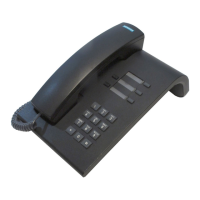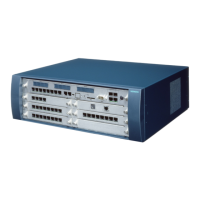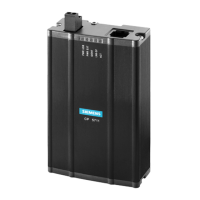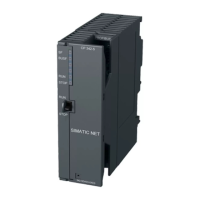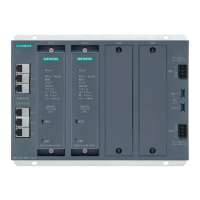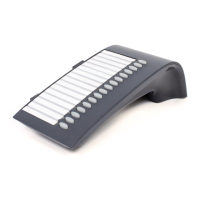Figure 12-10 Arrangement of BS, example: BS with outdoor casing
Example of the coverage of an outdoor area
A base station (BS) installed in an attic directly beside a dormer window (no metal
reinforcement in the window pane) is the alternative to outside casing (see page 12-56) for
coverage of the outdoor area.
Planning
A site map with a scale of 1:300, for example, is useful for determining the best location for the
BS (Figure 12-11).
- The customer's preferred radio range should be indicated on the map (customer confirmation).
- Additional information about the types of buildings and their heights is also helpful.
- The radio coverage can be determined with sufficient accuracy using the site map and the
above information.
Confirmation
The form "Configuration: Hicom cordless, Version 1" (order no. A31003-X81-X1-*-62) should
be filled out and confirmed by the customer.
Site plan (Figure 12-11)
This plan shows the grounds of a company with buildings labelled A to G as well as the type of
construction and the heights of the buildings.
- Bird's eye view
It is relatively simple to find the point which offers the best possible view of the grounds
without any obstacles.
Arrangement around the buildings C,E,F and G is not feasible since the view from these
buildings extends only to a few neighbouring buildings.
The view from buildings A and B is better.
In the example, the decision was made to place the BS at building B rather than A. Note that the
areas between buildings C and E as well as F,G and A are covered. The radio waves can pass
through brick building A, so that an area of about 10 meters beyond will still be covered.
In practice, one can assume that other outside areas will be covered as waves pass through the
window (see also Section 12.8.2).
Reinforced concrete buildings or buildings with metal facades
act as barriers. Areas behind these buildings are quasi-optically blocked and must be considered
not covered by the radio waves
Brick buildings
can usually be penetrated so that significant parts of them are reached by the radio waves. The
coverage range, however, often stops less than 10 meters beyond these buildings.
Hicom 150 E Office Rel.1.0 Service Manual - 12 Cordless Multicell Integration CMI
http://cmweb01.mch.pn.siemens.de/e_doku/en/h150/h15/30/sh/2/15_12.htm (36 of 45) [06/04/2000 13:05:57]

